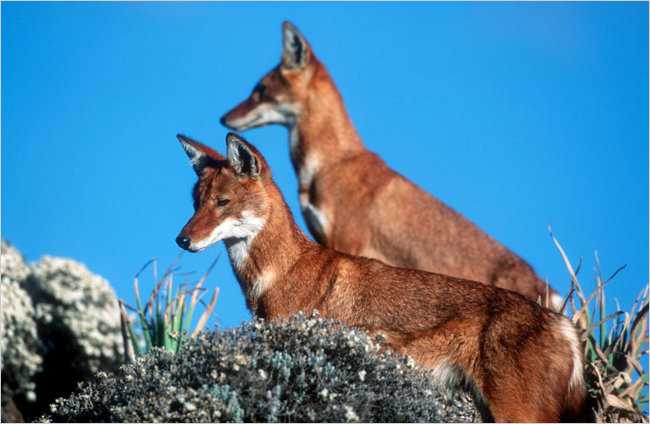Wolf Fans can add a new wolf to their list. A new grey wolf has been found and is being dubbed the “African Wolf”.
Phil Dickie – Researchers long surmised that this canine was a kind of jackal. These are shots of the golden jackal. New molecular evidence reveals a new species of grey wolf living in Africa. Formerly confused with golden jackals, and thought to be an Egyptian subspecies of jackal, the new African wolf shows that members of the grey wolf lineage reached Africa about 3 million years ago, before they spread throughout the northern hemisphere.
Add Gray Wolf to List of Canines in Africa
By SINDYA B. BHANOO
The Ethiopian highlands are home to two canine species that look deceptively similar, the gray wolf and the golden jackal, according to a new study in the journal PLoS One. Until now, the two midsize animals were thought to be the same species.
In the 1880s, the English biologist Thomas Huxley suspected that there was a wolf living in the region but had no way of investigating it at the time.
“This shows the progress of using modern genetic techniques for understanding ecology,” said Nils Stenseth, an evolutionary biologist at the University of Oslo and one of the study’s authors.
He and his colleagues, from the University of Oxford in England and Addis Ababa University in Ethiopia, analyzed feces samples and compared their information with data stored in GenBank, a collection of all publicly available DNA sequences maintained by the National Institutes of Health.
“We were really surprised to see that it was wolf DNA, and first off we assumed we had something wrong,” Dr. Stenseth said.
The wolf is cryptic and difficult to spot. Because so little known about the ecology of the species, it will take further study to grasp what the wolf’s living situation is today.
“What we want now is to go in and do a much more detailed evaluation of the wolf population,” which may be endangered, Dr. Stenseth said.
“It’s very clear that it’s a small population, because there are many biologists working in the area, and by now it would have otherwise been a known species,” he said.
www.nytimes.com, January 31, 2011

